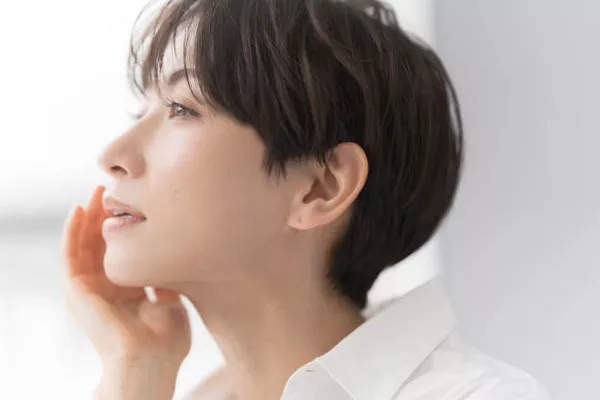Adding texture to short hair is a game-changer for achieving a stylish and trendy look. Whether you have a bob, pixie cut, or any other short hairstyle, adding texture can enhance volume, create movement, and make your hair appear more dynamic. In this article, we’ll explore various techniques, products, and styling tips to help you achieve beautifully textured short hair.
Understanding Hair Texture
What Is Hair Texture?
Hair texture refers to the natural pattern and structure of your hair. It can be straight, wavy, curly, or coily. Understanding your hair type is essential when considering how to add texture. For instance, curly hair may require different products and techniques compared to straight hair.
Why Is Texture Important?
Texture adds depth and dimension to your hairstyle. It can make short hair look more interesting and less flat. Adding texture can also help manage volume, making it easier to style and maintain your hair.
Techniques to Add Texture
1. Layering
What Are Layers?
Layering involves cutting hair at different lengths to create movement and volume. Layers can be subtle or dramatic, depending on your preference.
How to Layer Short Hair
- Consult a Stylist: Start by visiting a professional hairstylist. They can assess your hair type and recommend the best layering technique.
- Choose the Right Length: Determine how short you want your layers. Shorter layers can add more volume, while longer layers can create a softer look.
- Texturizing Techniques: Ask your stylist about texturizing shears, which can remove bulk from your hair without sacrificing length.
2. Texturizing Products
What Are Texturizing Products?
Texturizing products are designed to enhance the natural texture of your hair. They can range from sprays and creams to powders and mousses.
Recommended Texturizing Products
- Sea Salt Spray: Perfect for creating beachy waves and adding a matte finish. Spray it on damp hair and scrunch for a tousled look.
- Texturizing Cream: Use a small amount on dry hair to define and separate pieces. It’s great for creating a lived-in texture.
- Mousse: Apply to damp hair for volume and texture. Mousse can help hold styles without making hair feel stiff.
- Hair Powder: This is excellent for adding instant volume and texture. Sprinkle it at the roots and massage it in for lift.
3. Styling Techniques
How to Style for Texture
- Scrunching: After applying product, scrunch your hair in your hands. This encourages natural waves and texture.
- Twisting: Twist small sections of hair while drying with a diffuser. This method enhances waves and curls.
- Flat Iron: Use a flat iron to create bends in straight hair. Twist the iron slightly as you pull it down the hair shaft to add waves.
- Braiding: Braid damp hair before bed for textured waves in the morning. The tighter the braid, the more defined the waves.
Tools to Help Add Texture
1. Hair Dryer with Diffuser
A hair dryer with a diffuser attachment helps enhance natural waves and curls. Use it on a low setting to avoid frizz.
2. Curling Wand
For added texture, use a curling wand to create loose waves. Vary the size of the sections you curl for a more organic look.
3. Texturizing Shears
These specialized scissors can remove bulk from your hair without cutting length. They create a softer, more textured appearance.
Maintenance for Textured Short Hair
Regular Trims
Keeping your hair healthy and trimmed is essential for maintaining texture. Regular trims help prevent split ends and maintain the shape of your style.
Product Refresh
Consider using dry shampoo or texturizing sprays between washes. They can refresh your style and add volume and texture.
Hydration
Use moisturizing products to keep your hair healthy. Textured hair can be prone to dryness, so ensure you use a good conditioner and occasional hair masks.
Seasonal Styling Tips
Summer Texture Tips
In the summer, embrace beachy waves with sea salt spray. The humidity can also help enhance natural texture, so don’t shy away from the frizz!
Winter Texture Tips
In winter, static can become an issue. Use anti-frizz products to keep your hair looking sleek and textured. A nourishing oil can also help combat dryness.
Experimenting with Color
Highlights and Lowlights
Adding highlights or lowlights can create depth and dimension in your textured short hair. This can make your hairstyle appear more vibrant and multi-dimensional.
Ombre and Balayage
Consider techniques like ombre or balayage for a trendy look. These styles blend colors seamlessly, enhancing the texture of your hair.
Conclusion
Adding texture to short hair is a fun and creative way to express your style. Whether through layering, using texturizing products, or trying out various styling techniques, the options are endless. By understanding your hair type and experimenting with different methods, you can achieve a beautifully textured look that enhances your natural beauty.
Related Topics:
How To Choose The Right Hair Color For Short Hair
How To Create A Lazy Short Hair Style At Home
How To Match Short Hair With Various Hair Accessories


